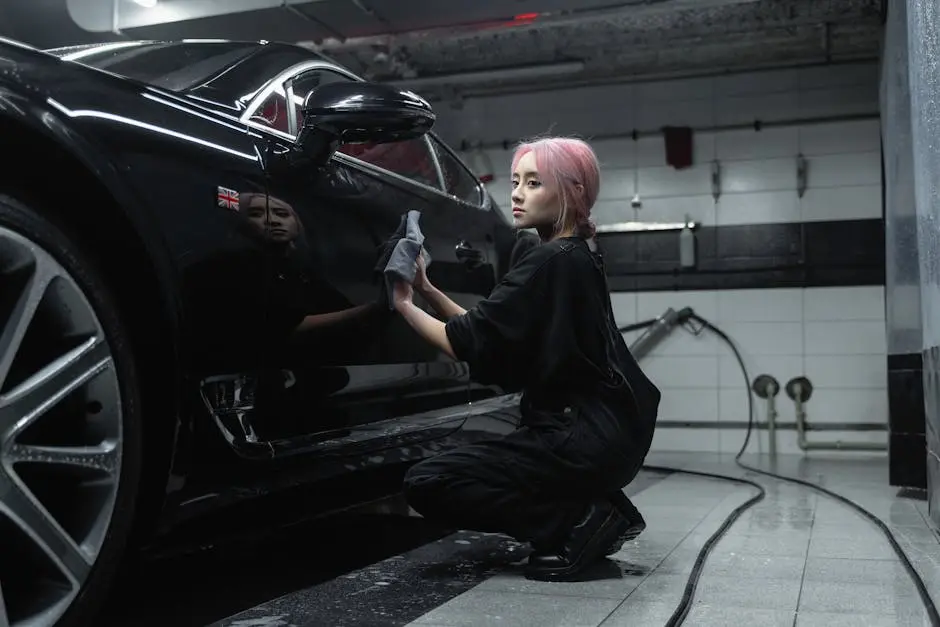
Car Buffing: Bringing the Shine to Your Driveway
Car buffing is not just about making your vehicle look good; it’s about protecting your investment and enhancing the overall driving experience. In this guide, we will explore the ins and outs of car buffing, including techniques, tools, and tips to keep your car looking fabulous. Whether you’re a seasoned car enthusiast or a beginner looking to spruce up your driveway, you’re in the right place!
What is Car Buffing and Why is it Important?
Car buffing involves polishing the exterior of your vehicle to remove minor scratches and blemishes, restoring its shine. This process is essential not just for aesthetics, but for preserving the paint and overall condition of your car.
When you think about it, your car faces a lot of wear and tear on a daily basis. From UV rays to dirt and grime, each day brings new challenges for your vehicle’s surface. Regular car buffing acts as a shield, keeping that vibrant paint looking fresh and new.
Moreover, car buffing can significantly increase your vehicle’s resale value. A well-maintained car not only attracts the eye of potential buyers but also gives them a sense of assurance regarding its condition. This is why investing time in buffing is not just a chore, but a smart financial decision.
Essential Tools for Effective Car Buffing
Before you start buffing, gather the necessary tools. A quality buffer, various grades of polishing pads, compounding compounds, and microfiber towels are vital for achieving the best results.
Choosing the right buffer makes all the difference. You might opt for a dual-action buffer for a gentle approach or a rotary buffer for professional-grade results. Both have their perks, so consider your comfort and experience level before diving in.
Don’t overlook polishing pads – using the correct pad for your specific needs is crucial. For instance, a soft pad is perfect for finishing touches, while a more aggressive pad can tackle deeper scratches. Having an array of pads on hand helps ensure you are prepared for any repair job.
And let’s not forget the importance of microfiber towels. These gentle cloths will prevent any additional scratches as you buff. Trust me, using high-quality towels can dramatically alter your buffing experience, so invest in a set that will last.
Step-by-Step Guide to Car Buffing
In this section, we’ll walk through the car buffing process, providing a step-by-step guide to ensure you buff like a pro. From washing your car to applying wax, we’ve got you covered.
First, start with a thorough wash. It may seem basic, but removing dirt and debris is crucial to prevent scratches during the buffing process. After washing, gently dry the car with a microfiber towel; wet spots can interfere with the buffing process.
Next, assess your car’s surface: look for scratches, swirls, or dull spots. You want to tailor your buffing strategy based on the condition of your paint. Remember, different areas may require different levels of attention.
With your tools ready and your car prepped, it’s time to apply the buffing compound. Use a small amount, as a little goes a long way. Work in small sections to ensure that each part of your car gets the attention it needs without overlapping.
As you buff, keep an eye on your pressure and speed. The goal is to be consistent yet gentle, allowing the product to do its job without burning the paint. This is where practice makes perfect!
Common Mistakes to Avoid While Buffing
Buffing can be tricky if you’re not careful. Learn about the common pitfalls, such as using the wrong products or applying too much pressure, and discover how to avoid these to ensure a flawless finish.
One major mistake new buffers make is neglecting to test a small area first. It’s vital to ensure your technique and products are effective before going all out on the entire car. Take a moment to experiment and find what works best.
Another common error is using the wrong type of buffer for your paint. A rotary buffer can quickly damage delicate paint, while a dual-action buffer provides a gentle touch. Know your vehicle and choose wisely to avoid costly mistakes!
Lastly, don’t forget to clean your pads regularly. Accumulated debris on your polishing pads can scratch your paint and ruin all your hard work. Keep them clean to maintain the best results and prolong their lifespan.
Maintaining Your Buffed Car: Tips for Longevity
After you’ve successfully buffed your car, maintaining that shine is crucial. Explore maintenance tips that include regular washing, avoiding harsh chemicals, and when to schedule your next buffing session.
To keep your car looking fresh, wash it regularly. Use pH-balanced car shampoos rather than regular detergents, which can strip away the oils and waxes that protect your buffed finish. Learn to embrace the gentle touch while washing.
Avoid parking your car under trees or in direct sunlight whenever possible. These elements can lead to new scratches or damage the finish over time. Protect your investment by being mindful of where you park, and use a quality car cover if needed.
Lastly, don’t forget to reapply protective wax or sealants every few months. This adds an additional layer of shine while safeguarding your paint from elemental damage. Regular maintenance will keep your car’s appearance fresh and extend your buffing results.
Wrapping Up Your Buffing Journey
By following these tips and techniques, car buffing can become an enjoyable, skill-building task that results in a shiny, protected vehicle. Embrace the satisfaction of seeing your car sparkle, and remember, a little care goes a long way in maintaining your car’s appearance and value. Now go ahead, roll up your sleeves, and bring that shine back to your driveway!

